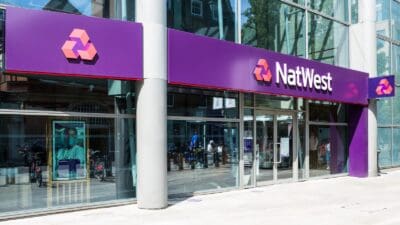As part of a diversified passive income portfolio, I’d consider buying shares in Warehouse REIT (LSE: WHR).
With the share price near 90p, the property business has a market capitalisation around £380m and resides in the FTSE SmallCap index.
As the name describes, the company is a real estate investment trust (REIT) and runs a diversified portfolio of UK commercial property warehouse assets.
Should you invest £1,000 in Warehouse Reit Plc right now?
When investing expert Mark Rogers has a stock tip, it can pay to listen. After all, the flagship Motley Fool Share Advisor newsletter he has run for nearly a decade has provided thousands of paying members with top stock recommendations from the UK and US markets. And right now, Mark thinks there are 6 standout stocks that investors should consider buying. Want to see if Warehouse Reit Plc made the list?
Please note that tax treatment depends on the individual circumstances of each client and may be subject to change in future. The content in this article is provided for information purposes only. It is not intended to be, neither does it constitute, any form of tax advice.
The sector’s been facing difficulties for some time. And higher interest rates have caused a tougher trading environment for the firm. But the investment team has been managing the portfolio to support the shareholder dividend. In some cases, that strategy involves careful asset sales and financial re-engineering to realise cash and value.
Nevertheless, the share price has been beaten down.
But that situation has led to what looks like a keener valuation with the dividend yield running above 7%.
A stream of passive income
The dividend record has been steady since 2019. And the company even kept up shareholder payments through the depths of the pandemic. Looking ahead, City analysts expect a dividend of around 6.4p per share for the current trading year to March 2024. And they’ve pencilled in the same for the following year.
To target around £1,000 of annual passive income from the dividends, I’d need to buy about 16,120 shares. That’s assuming the share price is close to 90p. And the cost to buy those shares would likely be just under £15,000, including likely trading costs.
Not all my eggs would go in the one basket. But as part of a larger portfolio, I think the stock offers reasonable recovery potential over the medium-to-long term. And providing the directors manage to keep up the dividend payments, there’ll be passive income along the way.
However, as with any investment, there are risks. And one is the company’s debt-load.
In November’s half-year report, chairman Neil Kirton said Interest rates will likely be high for longer than previous expectations.
That situation — if it plays out – will likely keep finance costs elevated and it also affects the firm’s tenants leading to increased risk of unpaid rent. However, in the first half of the year the company restructured its debt. Kirton said the move positions the business well for the second half.
Meanwhile, the US central bank decided to hold base rates in December and hinted that rates would be cut in the new year. And where the US goes, the UK often follows.
Shedding assets
The company is pursuing a plan to sell or part-sell non-core assets. And the focus is on “rebuilding dividend coverage”.
The directors have “conviction” in the plan. However, for the time being, predicted earnings fall a little short of covering the forecast dividend payments.
Kirton said the business benefits from “supportive” long-term trends, such as those in online retail and supply chain resilience. On top of that, the company serves many other industries. And Kirton sees the diversity as a key benefit of the business model.
Warehouse REIT looks like a business facing short-term challenges but with longer-term potential. So on balance and despite the risks, I think it’s worth my further research time now with a view to buying some of the shares.








